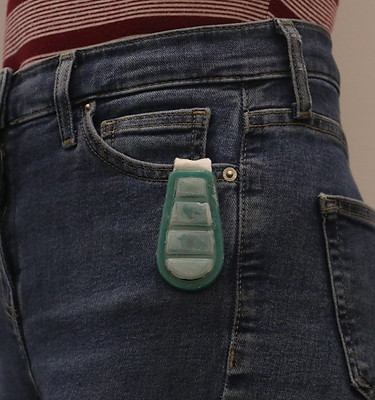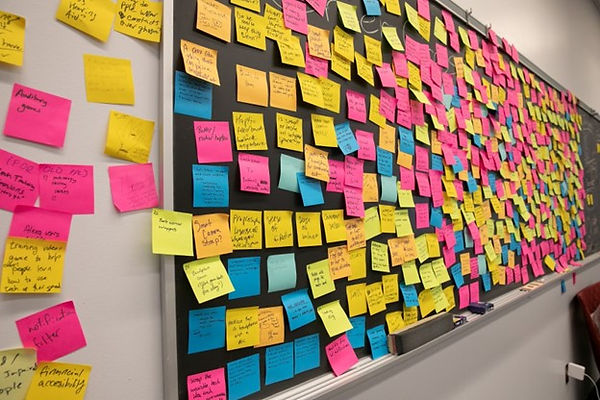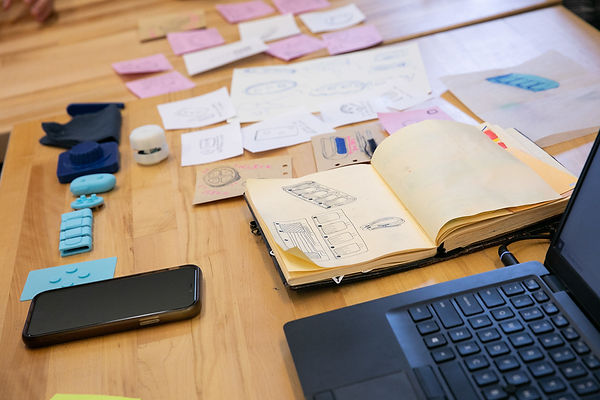Caitlin Kantor
Technology for the Blind
& Visually Impaired

In Spring 2022 I worked with the Blind and Visually Impaired (BVI) community to develop a product that would enable a seamless, discrete and screen-free interaction with their smart device.
Ideation


We started this process not knowing what the end product would look like. Initially we completed The 100 Ideas exercise, where no idea was excluded. Next, we graphed ideas based on their feasibility and their potential positive impact on our users.
After lots of exploration and narrowing down, we decided to move forward with three ideas. My team focused on a small remote control that could be easily
accessed or concealed.
Before we narrowed our focus to the pocket controller that folded over the edge of your clothing, we had many different ideas of how you could use a remote to interact with a device. Above you can see the low fidelity prototypes we created to get a sense of what people would find most natural to interact with, ranging from dials to buttons. Through these form factors, we wanted to understand what people would feel most comfortable carrying around. You can also see the original sketch of the concept we decided to pursue.
Initial Model
To the right you can see the CAD model of our design and a break down of all the components involved. This model was created after initial interviews informed us that the pocket controller needed to be asymmetric to help BVI individuals orient themselves with the device more easily.

.jpg)

Model for Demo Day

To the left is a working model of the pocket controller. Users were able control their touch screen with our device. Our custom PCBs were delayed and unable to be incorporated into our model. Instead, we wired the device to a solderable circuit board.
Since the wiring was sticking out of our model, it made it difficult for users to pick it up and imagine what it would be like to use the device in their everyday lives. To overcome this, we had a second model in tandem. This model had no wiring, but was able to give tactile feedback with buttons chosen specifically for their distinct click.
BVI community members loved being able to pick the device up and clip it on their clothes or bags. They enjoyed the simplicity of the concept as well as the discreet design. They were pleased with how thin it was overall and the fact they could decide to have it folded over their pocket or just in their pocket like a set of car keys.



Reflection
In tandem with countless user interviews and co-designs, I worked with a small team to bring the vision of the pocket controller to life. Our team focused on the button controlled form factor, providing users with a tactile method to approach their otherwise smooth device. I had the opportunity to develop my user oriented design skills by working with the BVI community. This allowed me to delve deep into the design process in an informed and reflective way. This project challenged my design research skills while focusing on the product development process. I worked with a cross-functional team of electrical, mechanical, and software engineers, a particular highlight of this project.